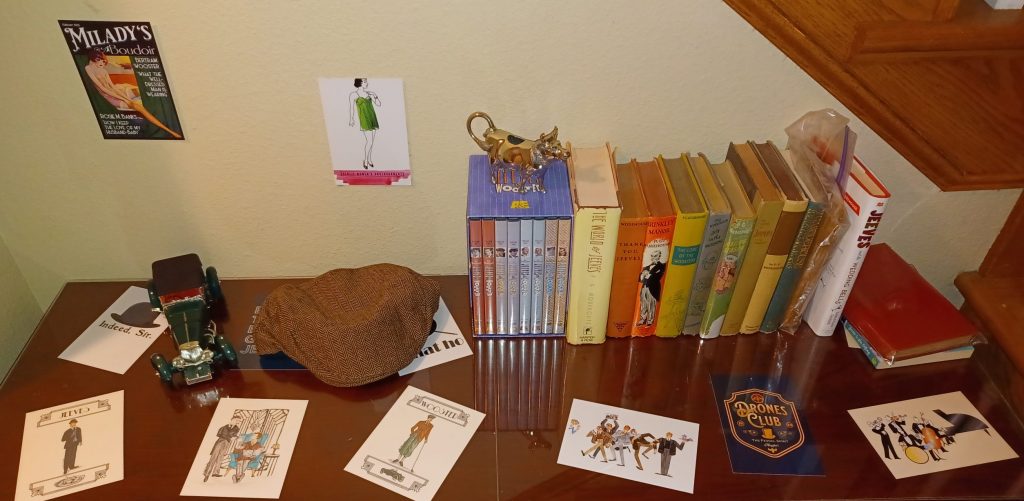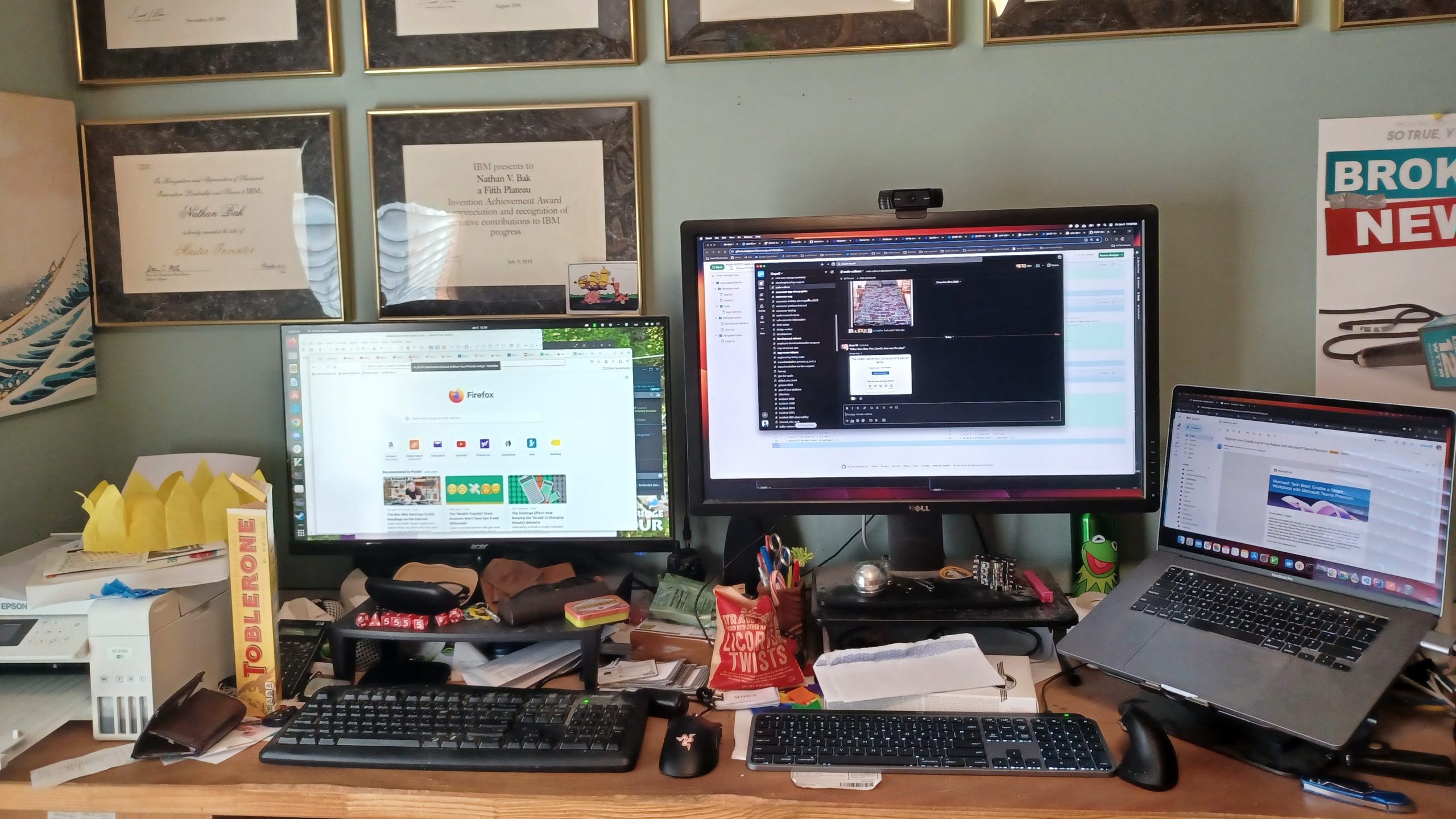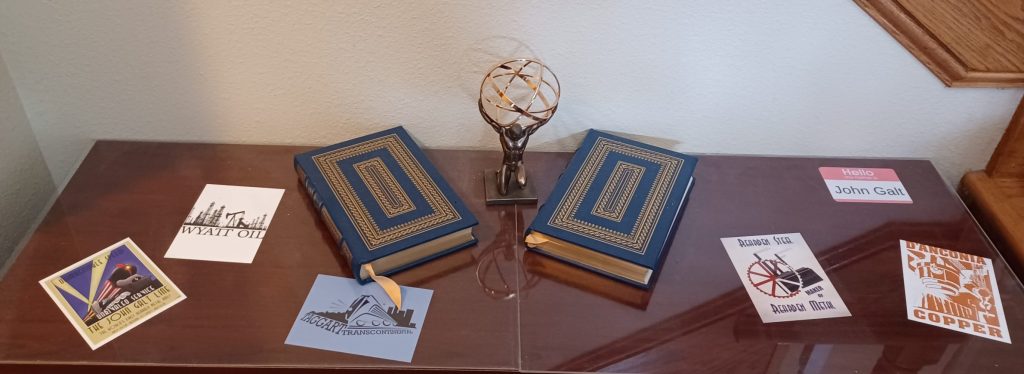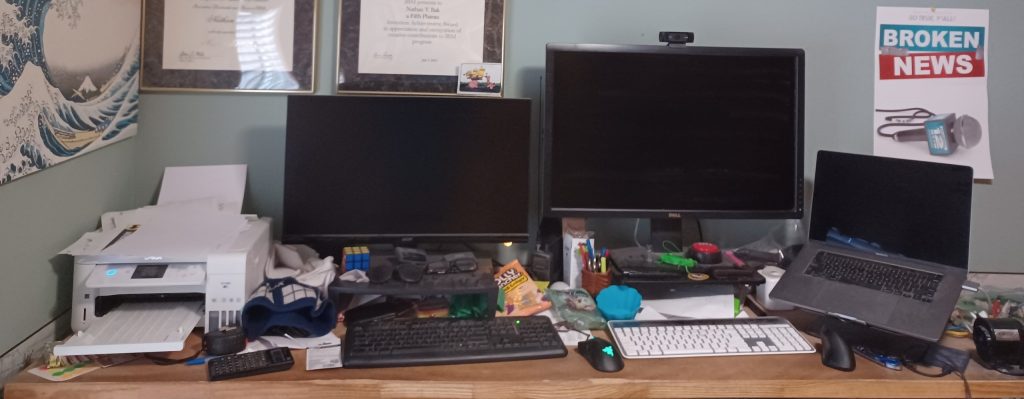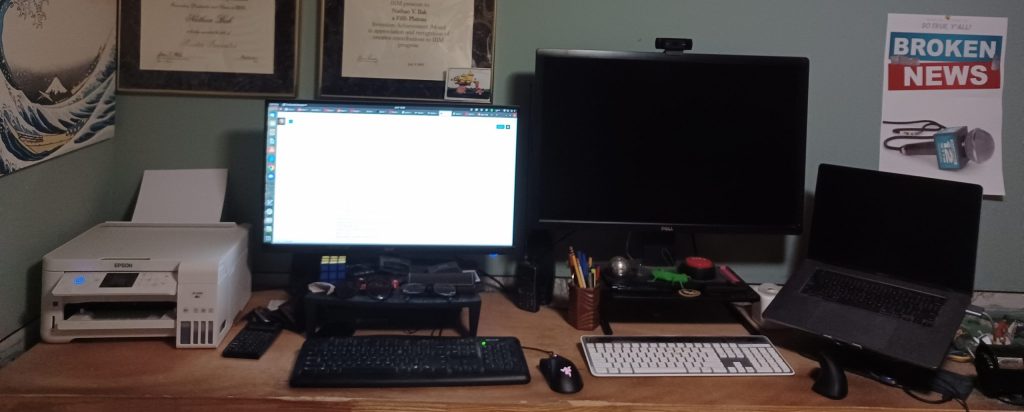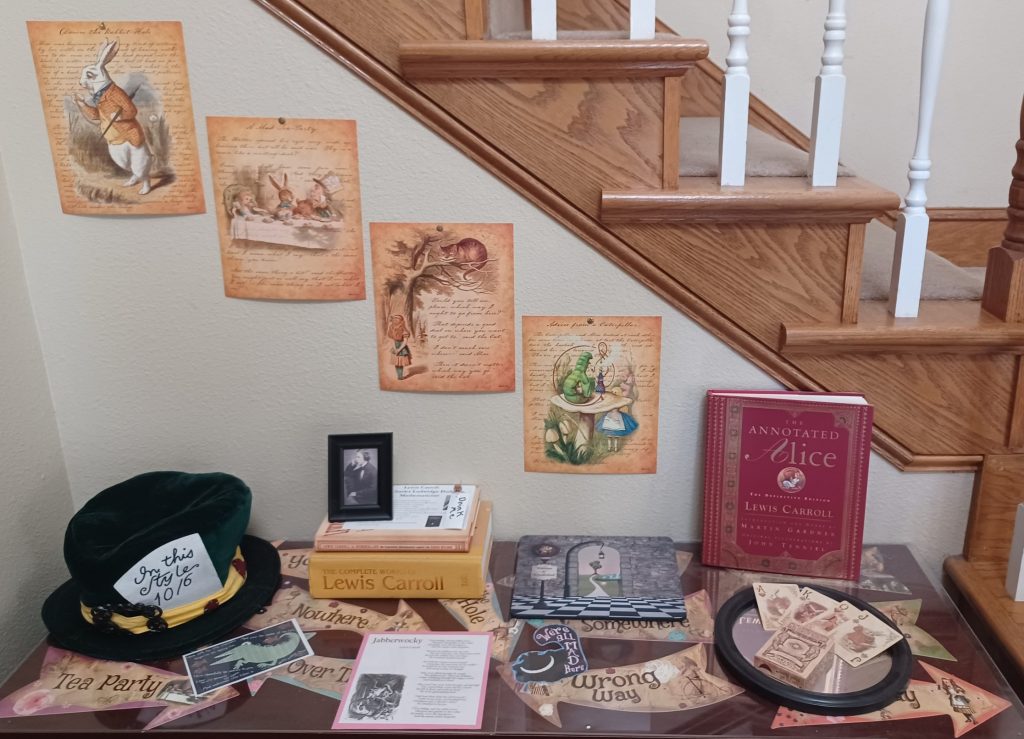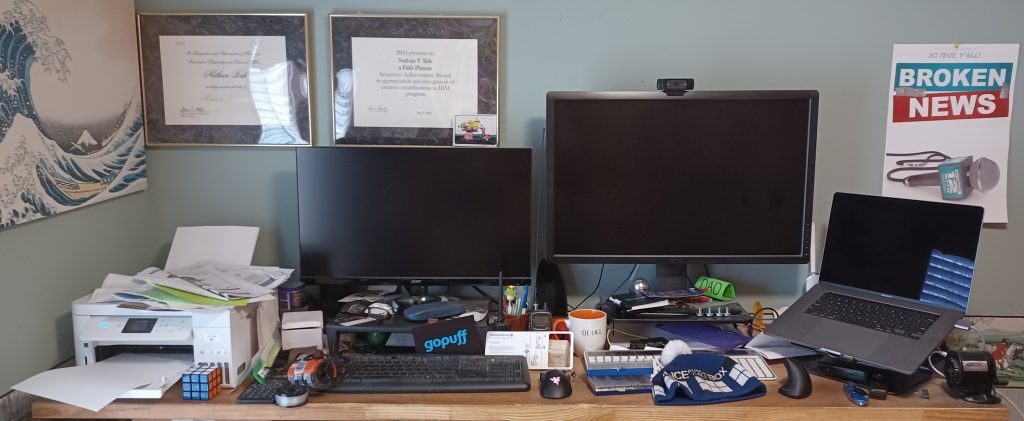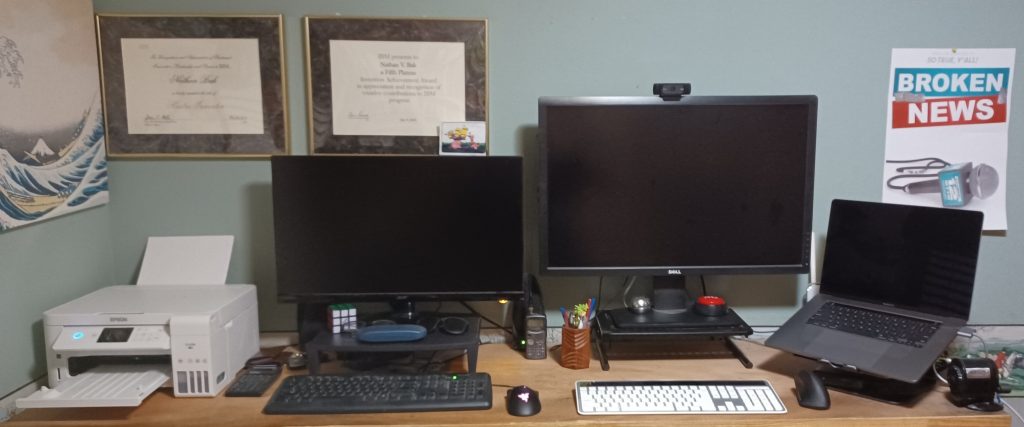2024 was a good year for reading. There were various things in 2024 that weren’t so good, but it was a good year for reading. I read all or part of various series including The Malazan Book of the Fallen, Mistborn, Jeeves and Wooster, and The Saga of Recluce. One series my daughter threw my way was “The Naturals”.
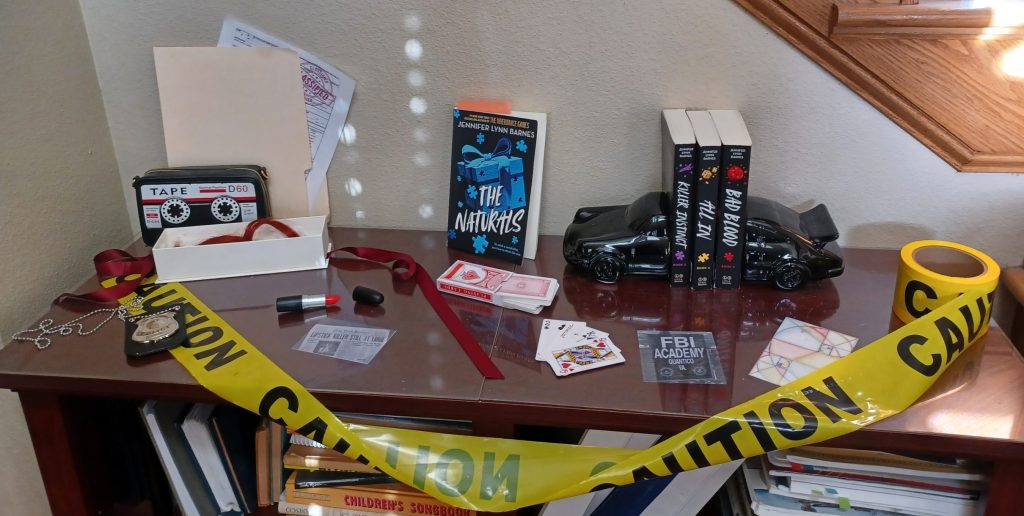
I’m probably not the target audience for The Naturals, but my daughter is and I don’t dislike her and am curious as to what she reads and enjoys. I consider the week of reading time spent to consume the four books in the series to have been enjoyable. Despite the somewhat predictable and formulaic narrative, it was a nice detour from the more intense and attention-requiring Malazan books.
So in 2023 I read read 48 books. I completed 72 books in 2024 (see table below for the titles the dates I finished reading each book). So far 2025 has been a better year overall, but not in terms of books read. But of course, 2024 was a good year for reading . . .
| 01/01/24 | The Bonehunters: Book Six of The Malazan Book of the Fallen |
| 01/06/24 | Ghost Soldiers: The Epic Account of World War II’s Greatest Rescue Mission |
| 01/07/24 | A Stroke of the Pen: The Lost Stories |
| 01/17/24 | Reaper’s Gale: Book Seven of The Malazan Book of the Fallen |
| 01/20/24 | The Lost Metal: A Mistborn Novel (The Mistborn Saga Book 7) |
| 01/22/24 | Jeeves in the Offing |
| 02/04/24 | Toll the Hounds: Book Eight of The Malazan Book of the Fallen |
| 02/07/24 | The Sunlit Man: A Cosmere Novel (Secret Projects Book 4) |
| 02/19/24 | Dust of Dreams: Book Nine of The Malazan Book of the Fallen |
| 02/20/24 | The Naturals (The Naturals, 1) |
| 02/22/24 | Killer Instinct (The Naturals, 2) |
| 02/23/24 | All In (The Naturals, 3) |
| 02/24/24 | Bad Blood (The Naturals, 4) |
| 02/26/24 | When I Whistle |
| 02/28/24 | Sputnik Sweetheart |
| 03/18/24 | The Crippled God: Book Ten of The Malazan Book of the Fallen |
| 03/19/24 | The Kamogawa Food Detectives |
| 03/31/24 | Chinese Fairy Tales and Legends |
| 04/03/24 | Japanese Folktales: Classic Stories from Japan’s Enchanted Past |
| 04/05/24 | Data Pipelines Pocket Reference: Moving and Processing Data for Analytics |
| 04/12/24 | Deciphering Data Architectures: Choosing Between a Modern Data Warehouse, Data Fabric, Data Lakehouse, and Data Mesh |
| 04/14/24 | The Color of Magic: A Discworld Novel |
| 04/18/24 | The Light Fantastic: A Novel of Discworld |
| 04/23/24 | Equal Rites: A Discworld Novel |
| 04/24/24 | Cost-Effective Data Pipelines: Balancing Trade-Offs When Developing Pipelines in the Cloud |
| 04/27/24 | Mort: A Discworld Novel |
| 04/30/24 | Sourcery: A Discworld Novel |
| 05/04/24 | The Magic of Recluce (Saga of Recluce Book 1) |
| 05/07/24 | The Towers of the Sunset (Saga of Recluce Book 2) |
| 05/11/24 | The Magic Engineer (Saga of Recluce Book 3) |
| 05/15/24 | The Order War (Saga of Recluce Book 4) |
| 05/26/24 | The Death of Chaos (Saga of Recluce Book 5) |
| 06/01/24 | Fall of Angels (Saga of Recluce Book 6) |
| 06/06/24 | The Chaos Balance (Saga of Recluce Book 7) |
| 06/11/24 | The White Order (Saga of Recluce Book 8) |
| 06/18/24 | Colors of Chaos (Saga of Recluce Book 9) |
| 06/23/24 | Magi’i of Cyador (Saga of Recluce Book 10) |
| 06/24/24 | Go for DevOps |
| 06/30/24 | Scion of Cyador (Saga of Recluce Book 11) |
| 07/07/24 | The 100-Year-Old Man Who Climbed Out the Window and Disappeared |
| 07/10/24 | Wellspring of Chaos (Saga of Recluce Book 12) |
| 07/13/24 | Ordermaster (Saga of Recluce Book 13) |
| 07/14/24 | Natural Ordermage (Saga of Recluce Book 14) |
| 07/17/24 | Mage-Guard of Hamor (Saga of Recluce Book 15) |
| 07/21/24 | Arms-Commander (Saga of Recluce Book 16) |
| 07/24/24 | Cyador’s Heirs (Saga of Recluce Book 17) |
| 07/28/24 | Heritage of Cyador (Saga of Recluce Book 18) |
| 08/05/24 | The Mongrel Mage (Saga of Recluce Book 19) |
| 08/07/24 | The Power of Truth: Individual Problems and Possibilities |
| 08/11/24 | Outcasts of Order (Saga of Recluce Book 20) |
| 08/14/24 | The Mage-Fire War (Saga of Recluce Book 21) |
| 08/17/24 | Fairhaven Rising (Saga of Recluce Book 22) |
| 08/19/24 | Annihilation: A Novel (Southern Reach Book 1) |
| 08/23/24 | Authority: A Novel (Southern Reach Book 2) |
| 08/31/24 | Acceptance: A Novel (Southern Reach Book 3) |
| 09/06/24 | Borne: A Novel |
| 09/08/24 | The Strange Bird: A Borne Story |
| 09/17/24 | Dead Astronauts: A Novel (Borne Book 2) |
| 09/22/24 | The Chronicles of Chrestomanci, Volume 1: Charmed Life / The Lives of Christopher Chant |
| 09/29/24 | The Chronicles of Chrestomanci, Vol. II: The Magicians of Caprona and Witch Week The Chronicles of Chrestomanci, Vol. II: The Magicians of Caprona and Witch Week |
| 10/09/24 | The Chronicles of Chrestomanci, Vol. III: Conrad’s Fate and The Pinhoe Egg |
| 10/14/24 | The Librarians and The Lost Lamp (The Librarians, 1) |
| 10/21/24 | The Blade Itself (The First Law Trilogy Book 1) |
| 10/31/24 | Before They Are Hanged (The First Law Trilogy, 2) |
| 11/11/24 | Last Argument of Kings (First Law Trilogy Book 3) |
| 11/21/24 | Best Served Cold |
| 12/12/24 | The Heroes |
| 12/14/24 | Kaiju Preservation Society |
| 12/16/24 | Old Man’s War (Old Man’s War, 1) |
| 12/20/24 | The Ghost Brigades (Old Man’s War, 2) |
| 12/22/24 | The Last Colony (Old Man’s War, 3) |
| 12/24/24 | Zoe’s Tale: An Old Man’s War Novel (Old Man’s War, 4) |
